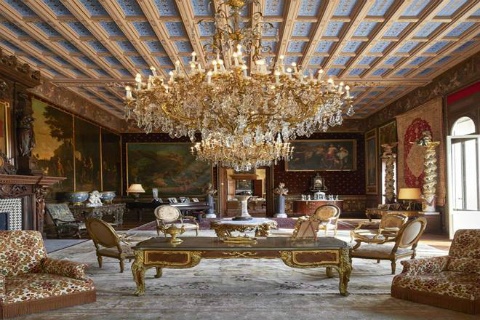Located in the French town of Saint-Jean-Cap-Ferrat near Nice, Villa Les Cèdres was built around 1830 and has been home to personalities like King Leopold II of Belgium.
A luxurious, 18,000 square-foot mansion in the South of France is up for sale for a price tag which, if paid, would make it the most expensive residential home in the history. Apart from its spacious ambiance, Villa Les Cèdres also boasts views of the Maritime Alps and Villefranche-sur-Mer.
Looking at the history of the house, it was bought in 1850 by then mayor of Villefranche-sur-Mer who turned it into an olive tree farm, hence the reason why 300-year-old olive trees could still be found there. After looking after the house for nearly half a century, the descendants of the mayor solid it to King Leopold II of Belgium in 1904.
The Belgian King, who made huge money by exploiting rubber trees and mineral resources of the Democratic Republic of Congo, expanded the house as well as the gardens which surround the home till this day.
Located near Nice in the French town of Saint-Jean-Cap-Ferrat, the home currently sits on around 35 acres. Apart from being decorated with 14,000+ species of plants, it contains Athena’s bronze state, a lily-pads-filled man-made pond, and olive trees which have been there for around 300 years.
Villa Les Cèdres is an 187-year-old mansion located just a few kilometers from Nice and a jewel of southern France. Yes, this stunning property is Europe's most expensive house. pic.twitter.com/q0tIGgf2X1
— Simon Józsefné Marcsi (@Marcsi51) November 11, 2017
On opening the gates of the villa, one is welcomed by a long, winding path, flanked by towering cedar and palm trees. It is from these cedar trees (cèdres in French) that the villa draws its name. At the house’s front entrance stands a bronze statue of Athena covered with marble tunic.
Step inside, and the vibe is that of something that is slightly weathered and decadent, though it is consistent with the Belle Epoque heyday of the estate: with chandeliers, French doors, grand sitting rooms, and floor-to-ceiling portraits of the 19th century greeting one’s presence. There’s also a wood-paneled library which contains 3,000+ books on plants.
Apart from the area that it covers and the furnishings that it offers, the location of the mansion – alongside the Mediterranean in the South of France, also makes it attracting for the super-rich. Over the course of history, industrialists, princes, and bankers built their homes along the same cost.
And after their downfall, Russian aristocracy before W-W-1, American billionaires after the stock market crash of the 1930s, and European superrich after W-W-2 have found solace in this area. Still, despite the rich history of this place and the grandness of the villa, it remains to be seen whether anyone has the financial muscle to purchase it.
